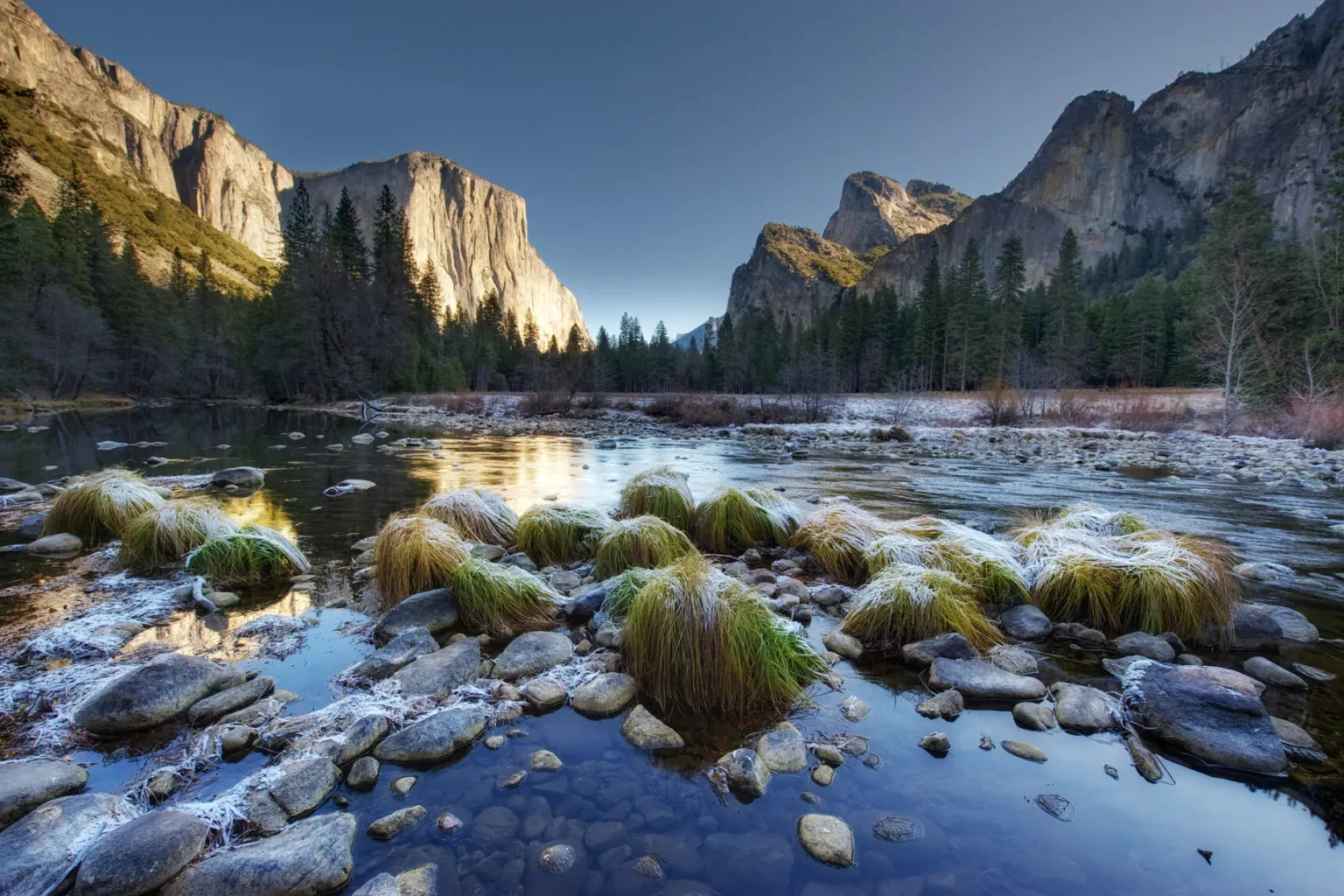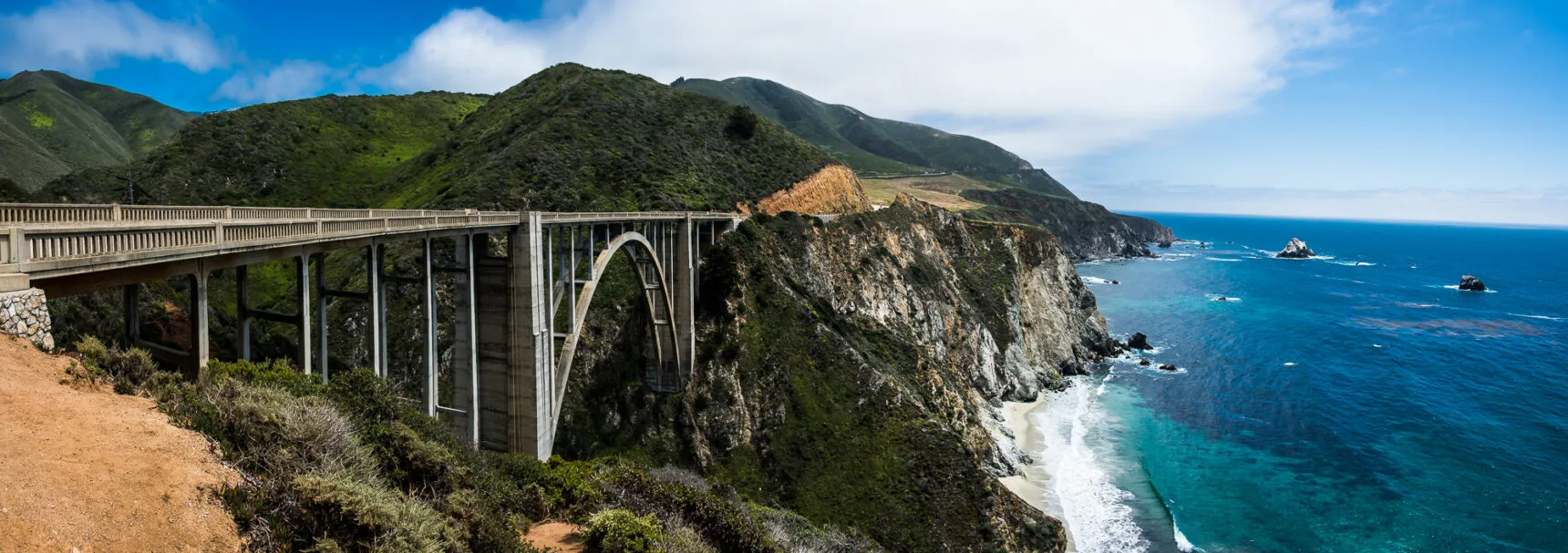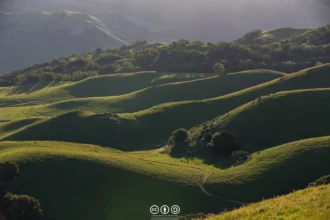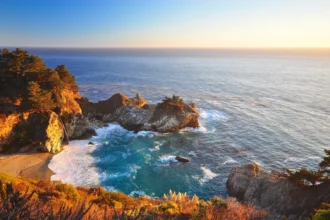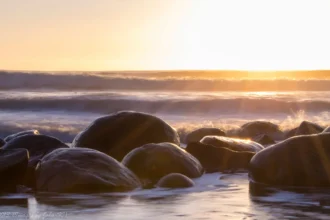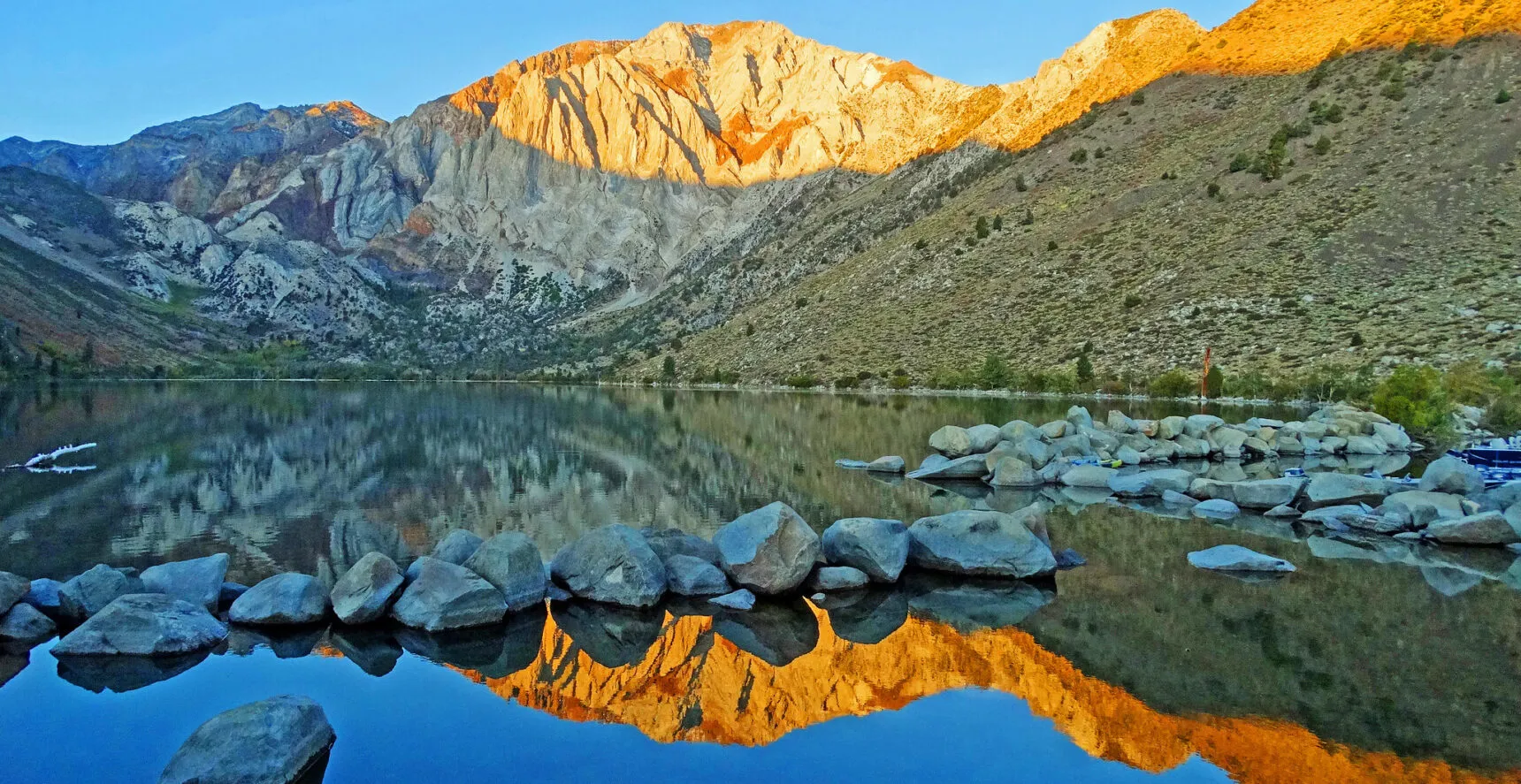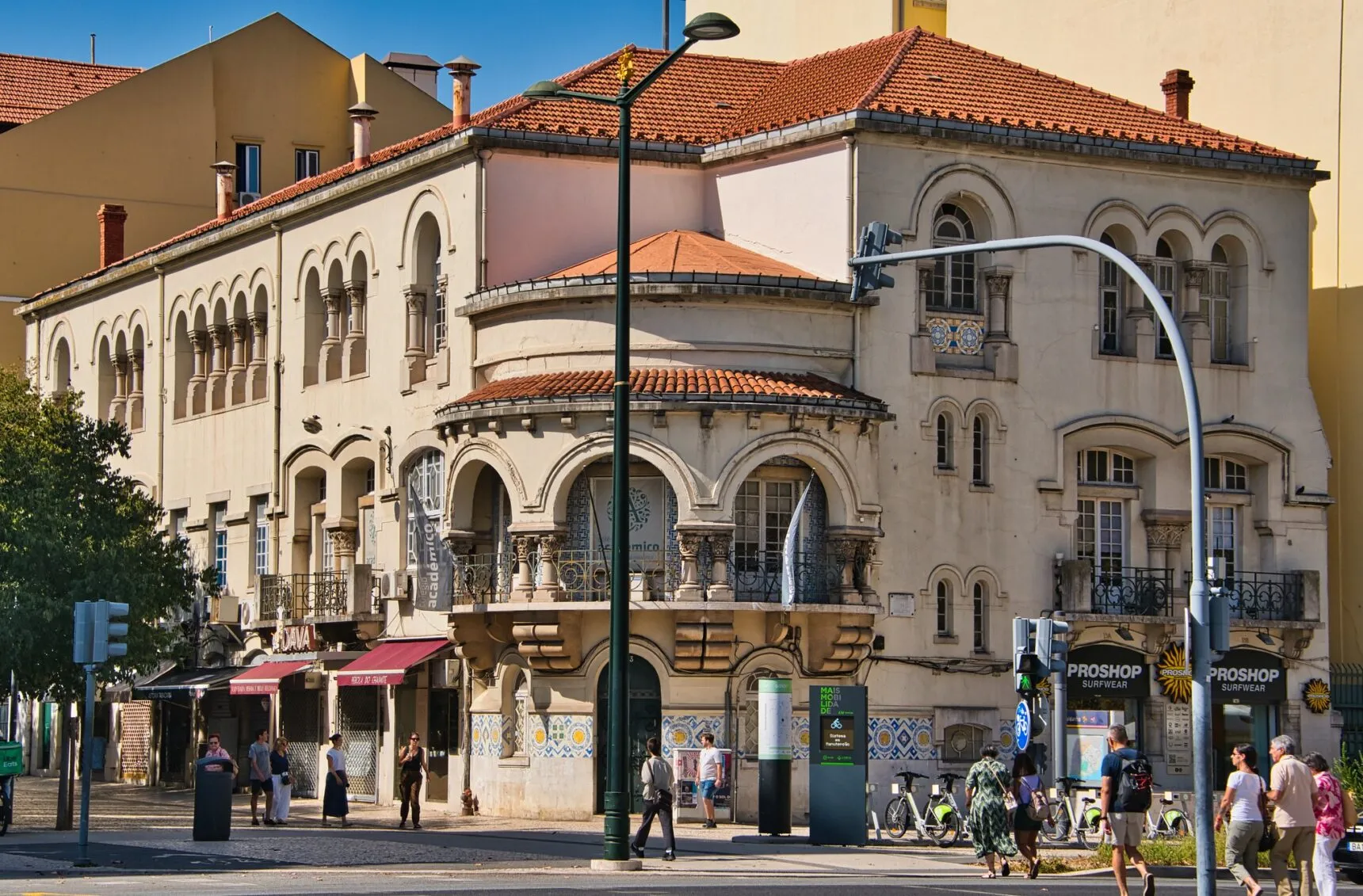This post is also available in:
Русский
Español
- Discovering California’s Most Spectacular Destinations in 2025
- Yosemite National Park — Valley View & Taft Point
- Death Valley National Park — Zabriskie Point & Badwater Basin
- Big Sur — Bixby Bridge & Pfeiffer Beach
- Mono Lake Tufa State Natural Reserve — South Tufa Area
- Redwood National and State Parks — Avenue of the Giants & Fern Canyon
- Joshua Tree National Park — Cholla Cactus Garden & Skull Rock
- Point Reyes National Seashore — Cypress Tree Tunnel & Alamere Falls
- Salvation Mountain & East Jesus — Desert Folk Art
- Alabama Hills National Scenic Area — Movie History & Mount Whitney Views
- The Getty Center — Architecture & Gardens Above LA
- Pinnacles National Park — Bear Gulch Cave Trail
- Bodie State Historic Park — California’s Best Ghost Town
- La Jolla Cove & Sea Caves — Urban Marine Sanctuary
- Glass Beach — Nature’s Transformation in Fort Bragg
- Anza-Borrego Desert State Park — The Slot & Galleta Meadows Sculptures
- Frequently Asked Questions About California’s Most Beautiful Places
- What’s the best time of year to visit these California destinations?
- Which destinations require advance reservations or permits in 2025?
- What are the most family-friendly destinations on this list?
- Which locations offer the best photography opportunities?
- How can I avoid crowds at these popular destinations?
- What essential items should I bring for visiting these places?
- Final Thoughts: Your California Adventure Awaits
California’s most transcendent destinations await, from misty redwood cathedrals to surreal desert sculptures. We’ve explored the Golden State’s iconic landmarks and hidden treasures to bring you 15 unforgettable experiences with current access info, insider tips, and 2025’s essential booking requirements.
Discovering California’s Most Spectacular Destinations in 2025
California exists as much in imagination as on the map—a landscape where ancient forests meet futuristic cities, where deserts bloom with art, and where the Pacific carves one of Earth’s most dramatic coastlines. This curated journey reveals destinations that transcend mere beauty to offer transformative experiences.
The 2025 traveler faces a new California reality: reservation systems at premier parks, climate-driven access changes, and the Instagram effect on once-hidden gems. This guide navigates these challenges while uncovering the state’s most visually stunning and emotionally resonant places, from world-famous icons to treasures known mainly to locals.
Quick Summary
Planning a road trip? Check out our guide to Best California Road Trip Routes — perfectly planned adventures for every timeline and interest.
Yosemite National Park — Valley View & Taft Point
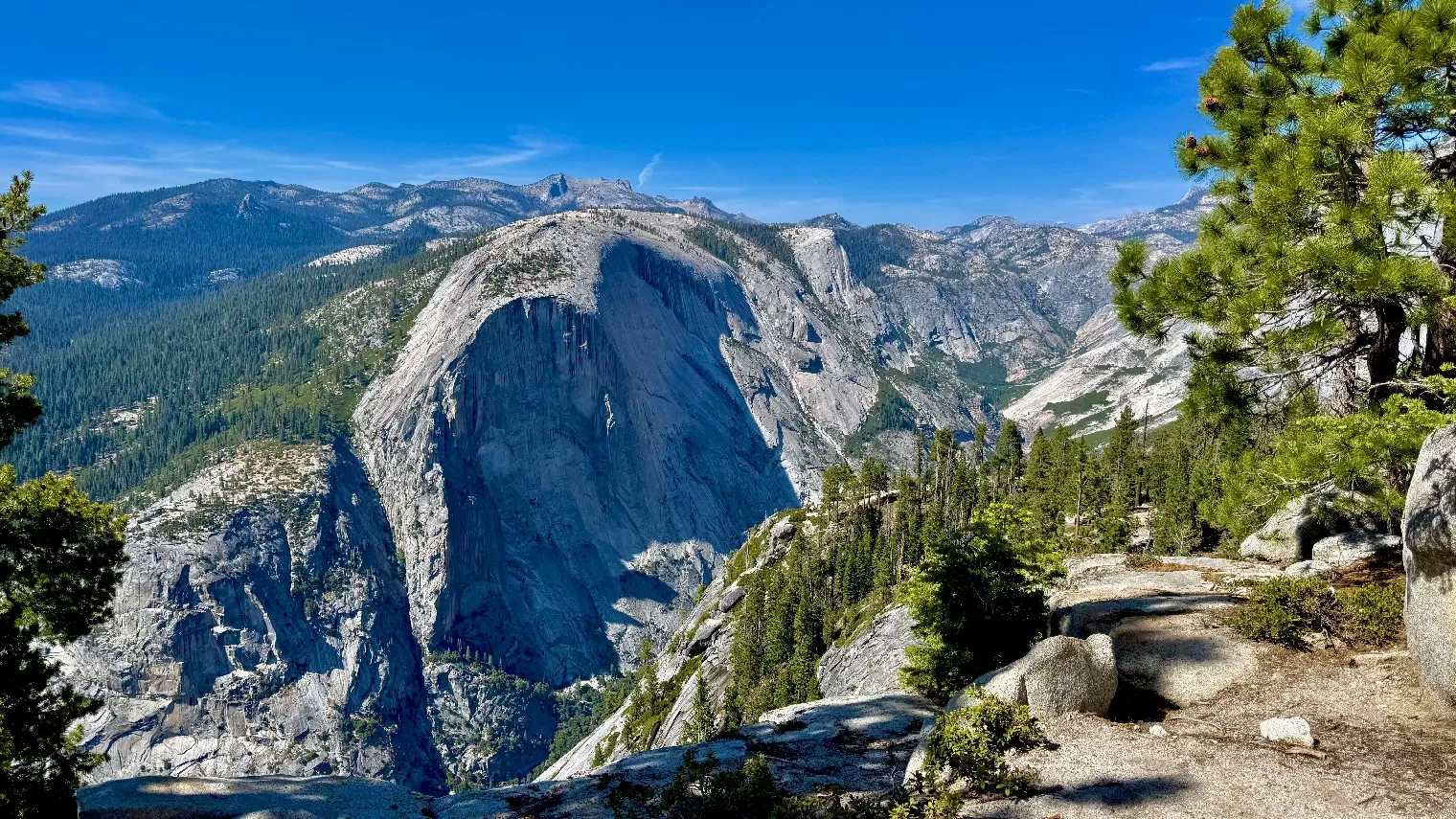
Standing at Valley View as morning light touches El Capitan’s granite face, you understand why Yosemite birthed the national park idea. The Merced River mirrors towering cliffs while Bridalveil Fall cascades 620 feet. This quintessential vista requires just a short riverside walk. Peak season now demands advance reservations.
For adrenaline seekers, Taft Point delivers vertigo-inducing thrills. The easy 2.2-mile hike ends at a 3,000-foot cliff drop with minimal railings. Sunset here ranks among California’s best—alpenglow bathes the valley while El Capitan glows golden. Arrive 90 minutes before sunset for parking. Headlamp essential for return.
What Makes Yosemite Special
Details for Yosemite National Park
Death Valley National Park — Zabriskie Point & Badwater Basin
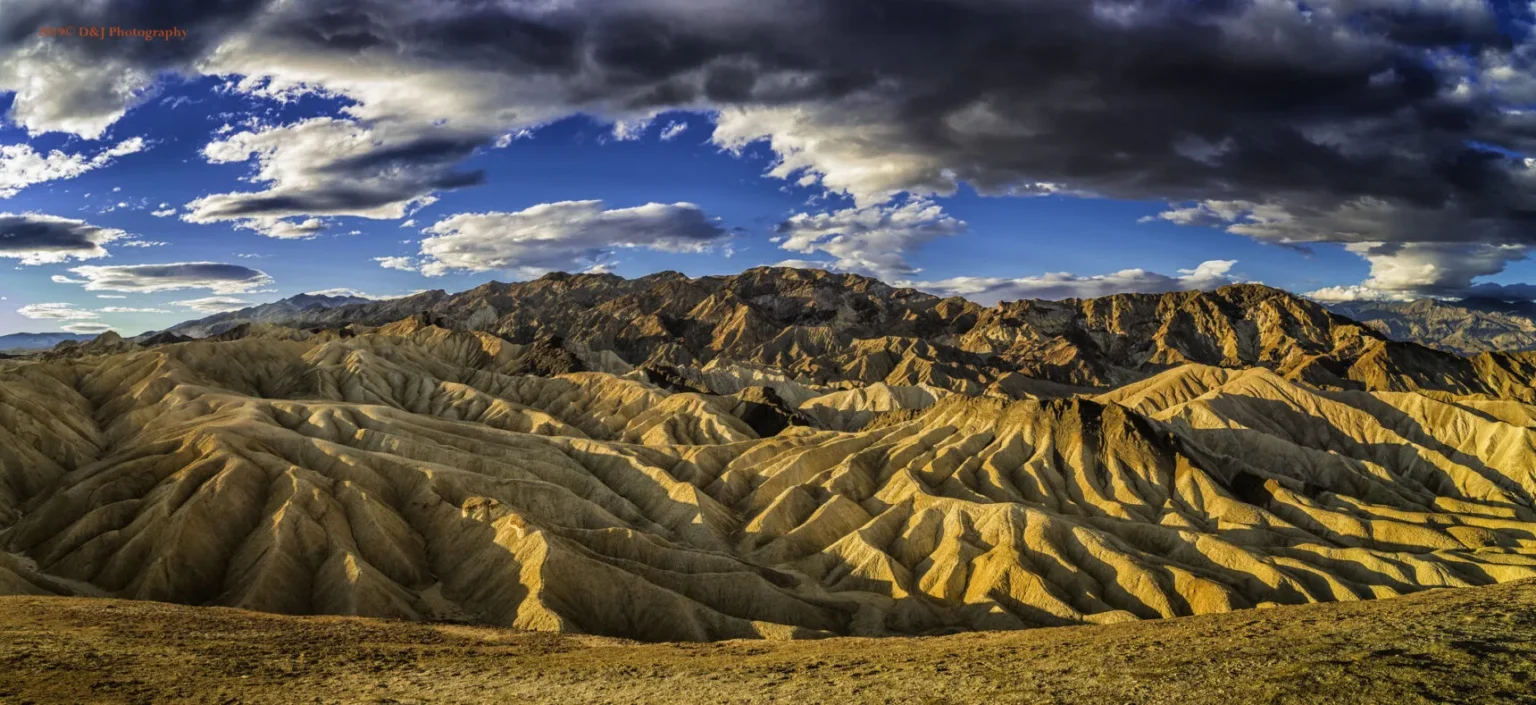
Death Valley earns every superlative—hottest, driest, lowest point in North America. At Zabriskie Point, golden badlands ripple toward distant mountains in otherworldly formations. Sunrise transforms the eroded mudstone into liquid gold. Just a paved walkway from parking delivers this Martian vista.
Descend to Badwater Basin, 282 feet below sea level, where vast salt flats stretch endlessly. Hexagonal salt polygons create natural art beneath your feet. The “Sea Level” sign on cliffs above provides vertigo-inducing perspective. Visit November-March only—summer temps exceed 120°F. Bring gallons of water always.
What Makes Death Valley Special
Details for Death Valley National Park
Big Sur — Bixby Bridge & Pfeiffer Beach

Big Sur embodies California’s wild coast where mountains plunge into Pacific swells. Bixby Bridge soars 260 feet above a rugged canyon—the definitive Highway 1 icon. Castle Rock viewpoint offers the money shot. This engineering marvel from 1932 frames the untamed coastline perfectly. Check road conditions before driving.
Hidden Pfeiffer Beach rewards those who find its unmarked road. Purple sand from manganese garnet creates surreal streaks, especially after rain. December-January sunsets shoot through Keyhole Arch like a laser. Arrive early—tiny lot fills fast. Cash only ($15). No cell service. Worth every narrow mile down Sycamore Canyon Road.
What Makes Big Sur Special
Details for Big Sur
Mono Lake Tufa State Natural Reserve — South Tufa Area
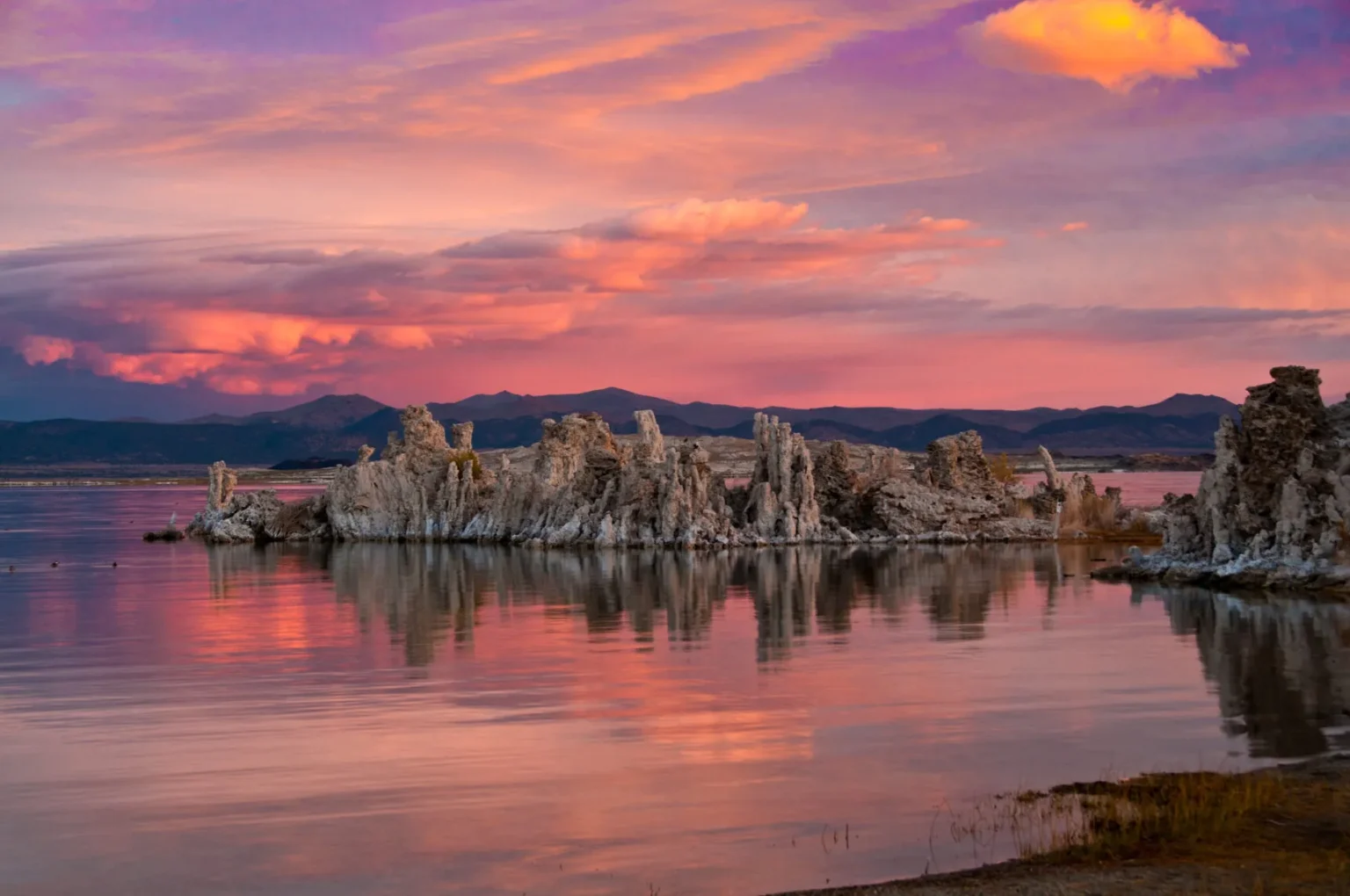
Mono Lake’s alien landscape defies earthly comparisons. Limestone tufa towers rise from hyper-saline waters like ancient castle spires. These formations emerged when LA’s water diversions dropped lake levels. South Tufa trail weaves between 30-foot calcium carbonate sculptures. Sierra Nevada peaks complete the surreal tableau.
Visit at sunrise when alpenglow paints towers pink against turquoise water. Alkali flies swarm harmlessly—they’re vital bird food. The lake’s 1994 conservation victory saved this ecosystem. Bring telephoto lens for migratory birds. High altitude means intense sun. $3 entrance honors decades of grassroots preservation efforts.
What Makes Mono Lake Special
Details for Mono Lake
Exploring the Eastern Sierra? Discover more in our guide to Eastern Sierra Nevada Scenic Drives — featuring breathtaking mountain passes and alpine lakes.
Redwood National and State Parks — Avenue of the Giants & Fern Canyon
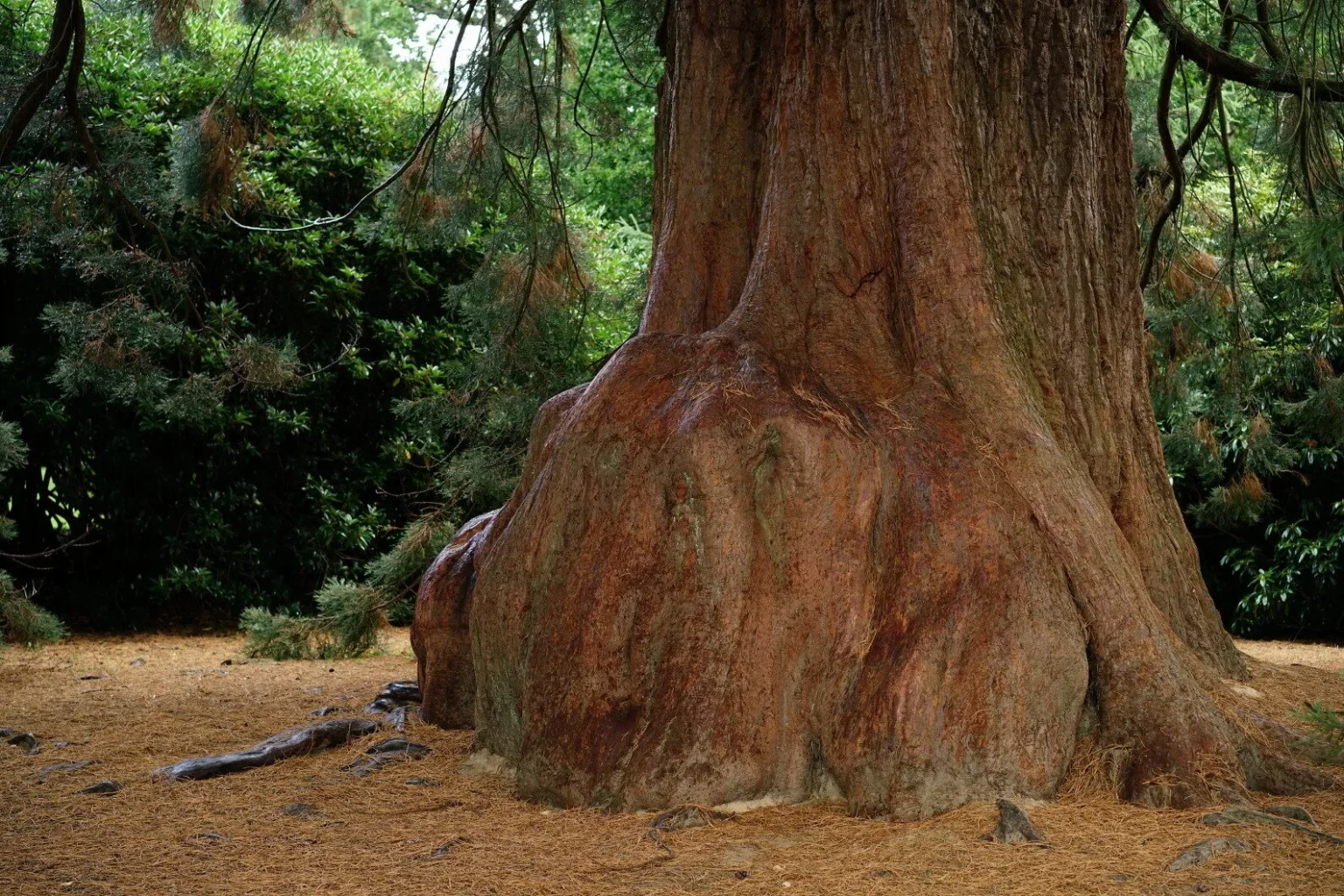
Stand among Earth’s tallest living things in hushed redwood groves. The Avenue of the Giants winds 31 miles through trees older than Christianity. Some towers reach 370 feet—taller than the Statue of Liberty. Morning fog transforms the forest into Tolkien’s Middle-earth. Multiple pullouts let you walk among these 2,000-year-old titans.
Fern Canyon feels prehistoric—Spielberg filmed Jurassic Park here. Fifty-foot walls drip with five-finger ferns while Home Creek gurgles underfoot. Permits required May-September book online weeks ahead. Waterproof boots essential. The intimate canyon contrasts perfectly with the towering avenue. Both experiences define the North Coast.
What Makes the Redwoods Special
Details for Redwood Parks
Joshua Tree National Park — Cholla Cactus Garden & Skull Rock
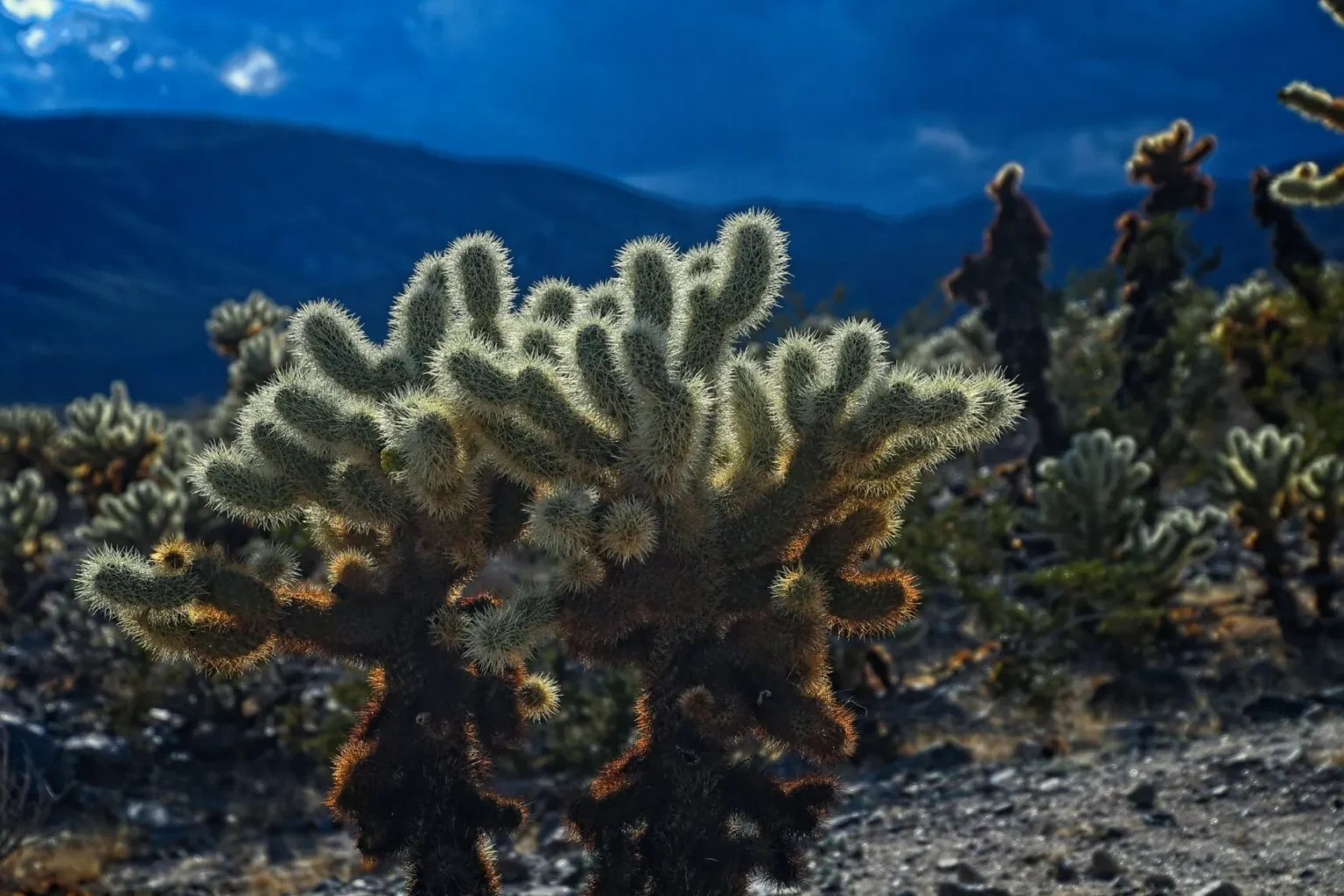
Where Mojave meets Colorado Desert, Dr. Seuss landscapes come alive. Twisted Joshua trees frame boulder piles perfect for scrambling. Skull Rock’s hollow eyes stare from weathered granite—nature’s sculpture accessible via short loop trail. Two desert ecosystems collide here creating biodiversity found nowhere else on Earth.
Cholla Cactus Garden mesmerizes at sunset when thousands of spines catch golden light. These “teddy bears” aren’t cuddly—barbed needles detach on contact. Stay strictly on trail. Bring tweezers for emergencies. The quarter-mile path reveals desert adaptation at its finest. Dark sky designation makes night visits magical too.
What Makes Joshua Tree Special
Details for Joshua Tree
Point Reyes National Seashore — Cypress Tree Tunnel & Alamere Falls
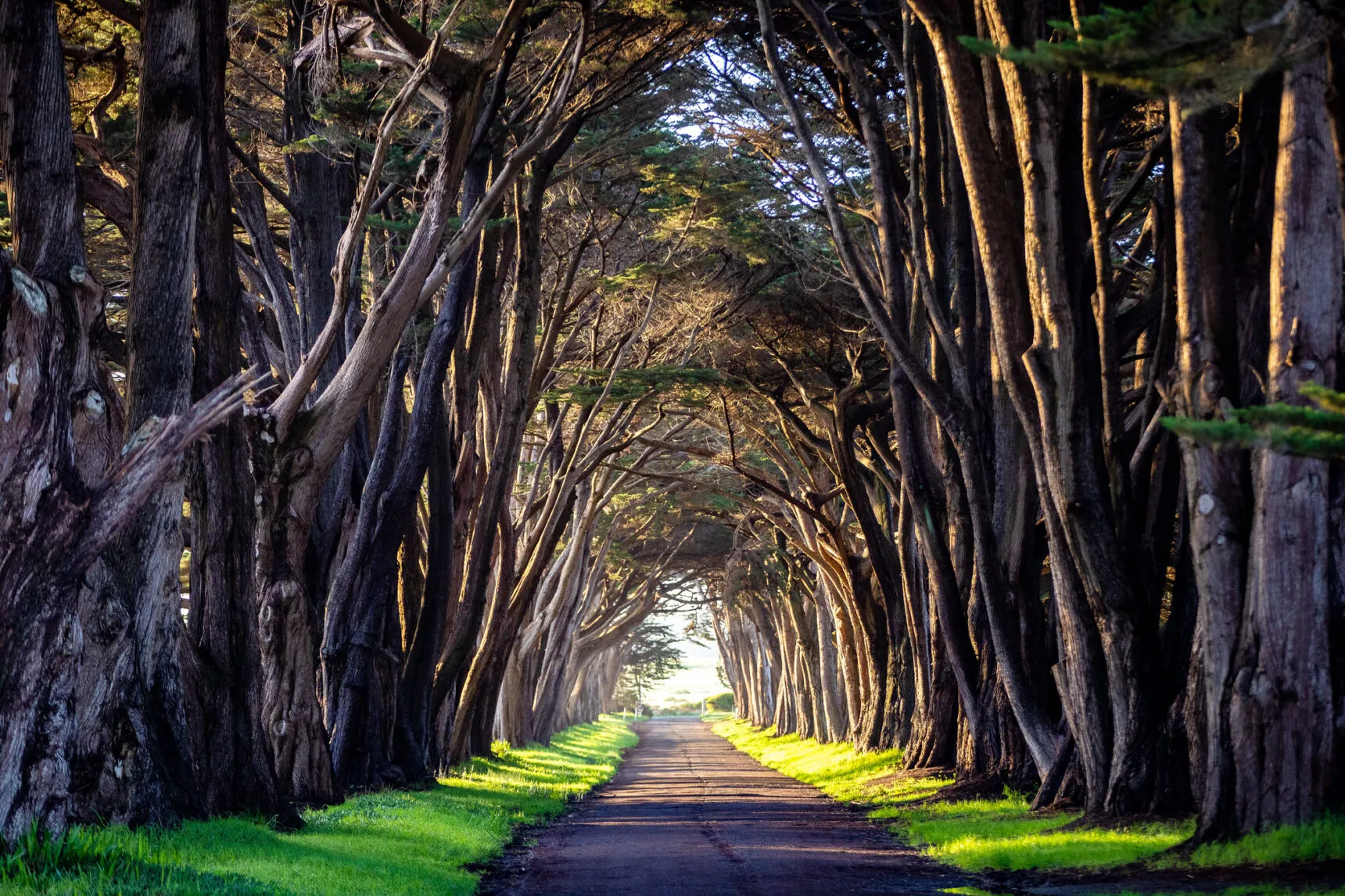
Two Point Reyes treasures showcase effort versus reward. The Cypress Tree Tunnel delivers Instagram gold for minimal work—planted cypresses arch overhead creating a fairytale passage. Late afternoon light filters magically through branches. Park roadside, walk five minutes, capture the shot. Every photographer’s dream delivered effortlessly.
Alamere Falls demands dedication: 13-mile round trip to witness a rare “tidefall” plunging onto beach. Start early from Palomarin, pack lunch, check tides—beach approach only works at low tide. The payoff? Freshwater cascading directly into ocean waves. Few places on Earth offer this phenomenon. Wilderness solitude guaranteed.
What Makes Point Reyes Special
Details for Point Reyes
Salvation Mountain & East Jesus — Desert Folk Art
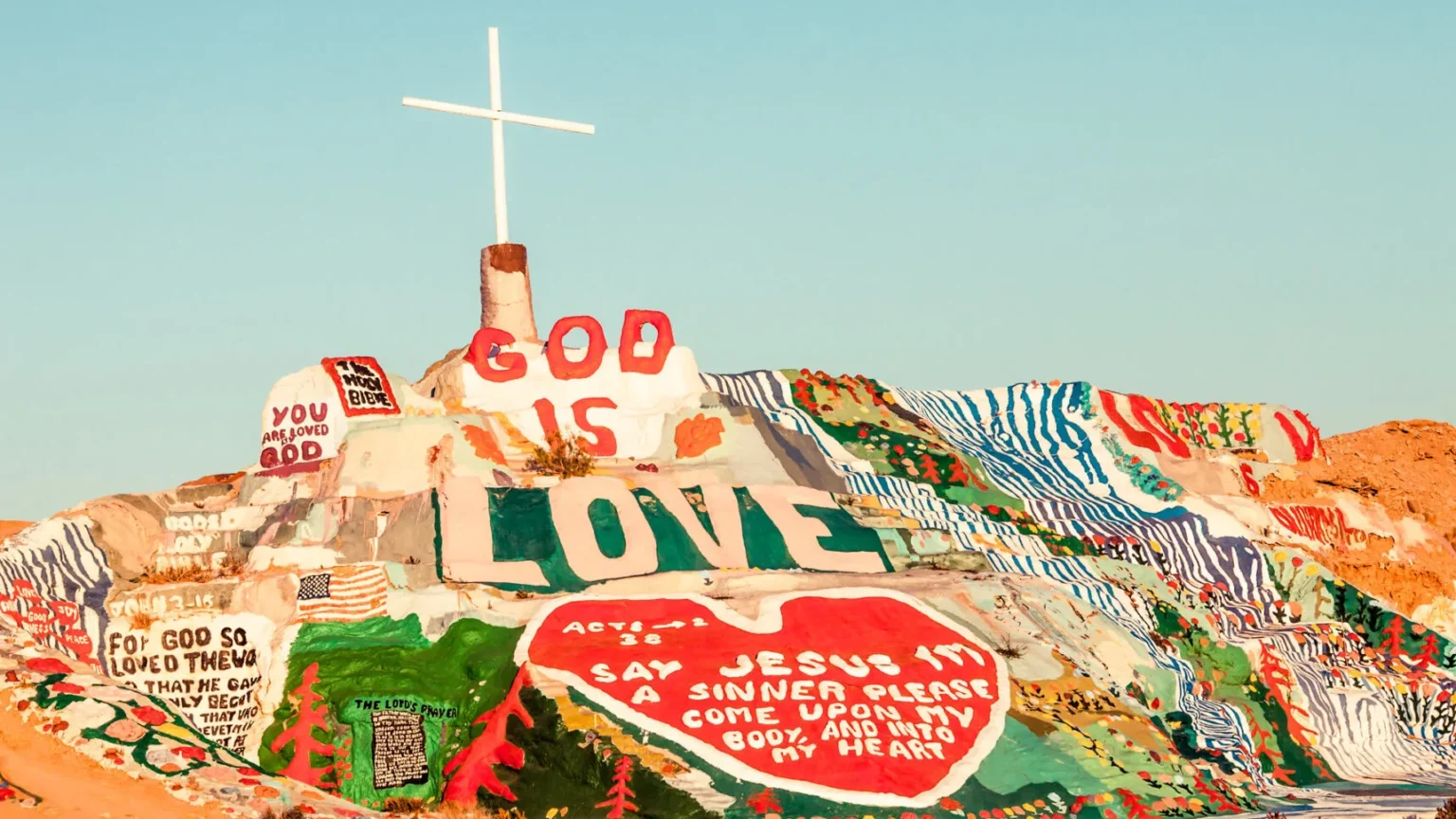
Near the Salton Sea, America’s most vibrant outsider art blazes against desert browns. Salvation Mountain rises 50 feet, painted in psychedelic colors proclaiming “God Is Love.” Leonard Knight’s 30-year devotion created this folk art masterpiece using adobe, straw, and thousands of paint gallons. Walk the yellow brick road to the summit.
Steps away, East Jesus offers secular creativity—an ever-evolving sculpture garden built from society’s discards. Artists transform trash into thought-provoking installations: TV walls, tire mammoths, bottle trees. Unlike static Salvation Mountain, this living art colony changes constantly. Both sites run on donations. October-April visits avoid brutal heat.
What Makes This Desert Art Special
Details for Desert Art Sites
Alabama Hills National Scenic Area — Movie History & Mount Whitney Views
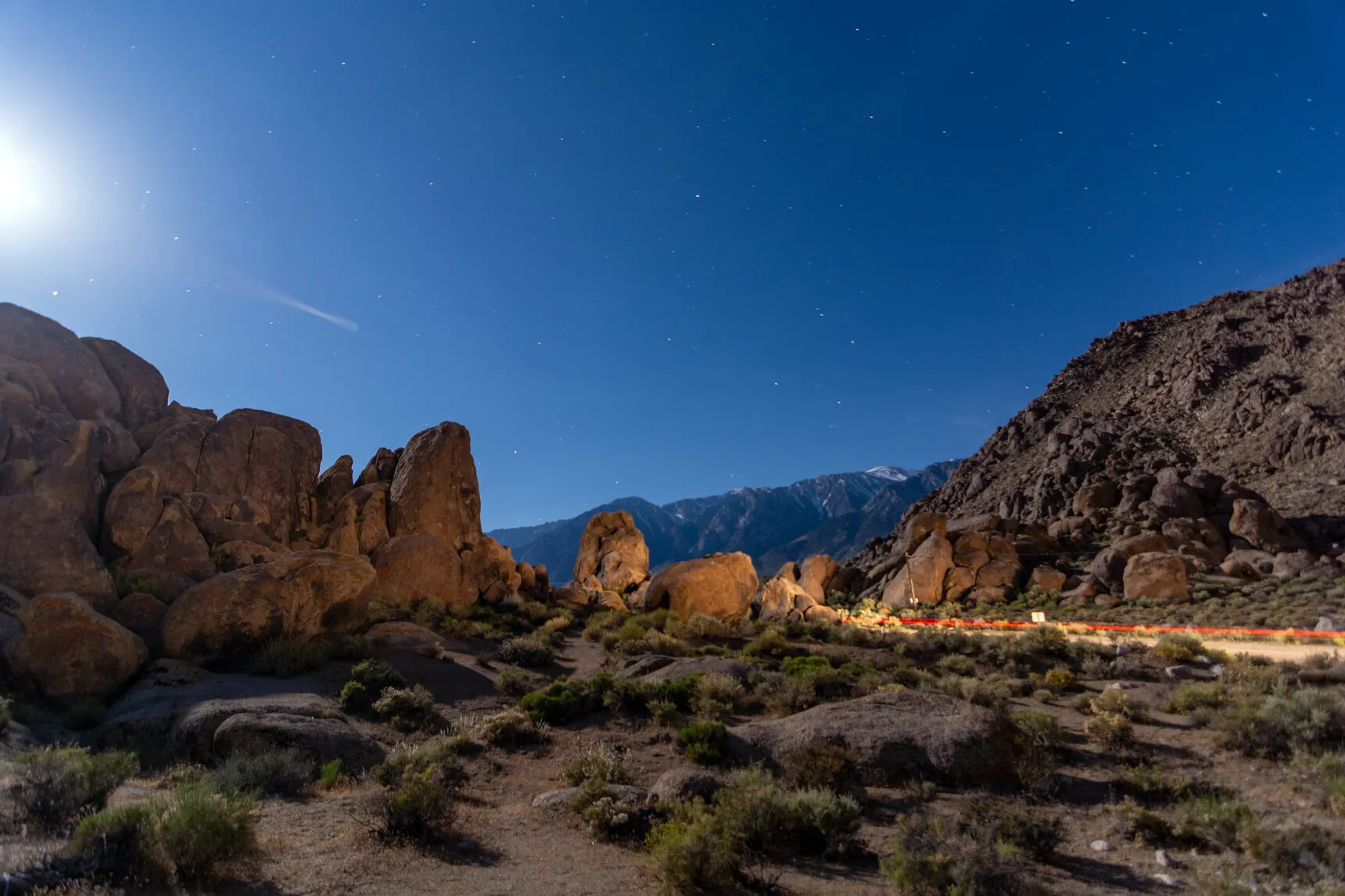
Hollywood’s favorite backdrop sprawls beneath Mount Whitney’s 14,505-foot summit. Weathered granite arches and boulders served as sets for 400+ films from Westerns to Star Trek. Mobius Arch frames the peak perfectly—arrive before dawn for alpenglow magic. Short trail from parking delivers this quintessential Eastern Sierra shot.
Drive Movie Road to spot familiar formations from Django Unchained and Iron Man. Free camping requires permits now—preservation in action. Dark sky designation makes night photography spectacular with arches silhouetted against the Milky Way. Spring and fall offer perfect temps. Summer scorches; winter road can ice over.
What Makes Alabama Hills Special
Details for Alabama Hills
The Getty Center — Architecture & Gardens Above LA
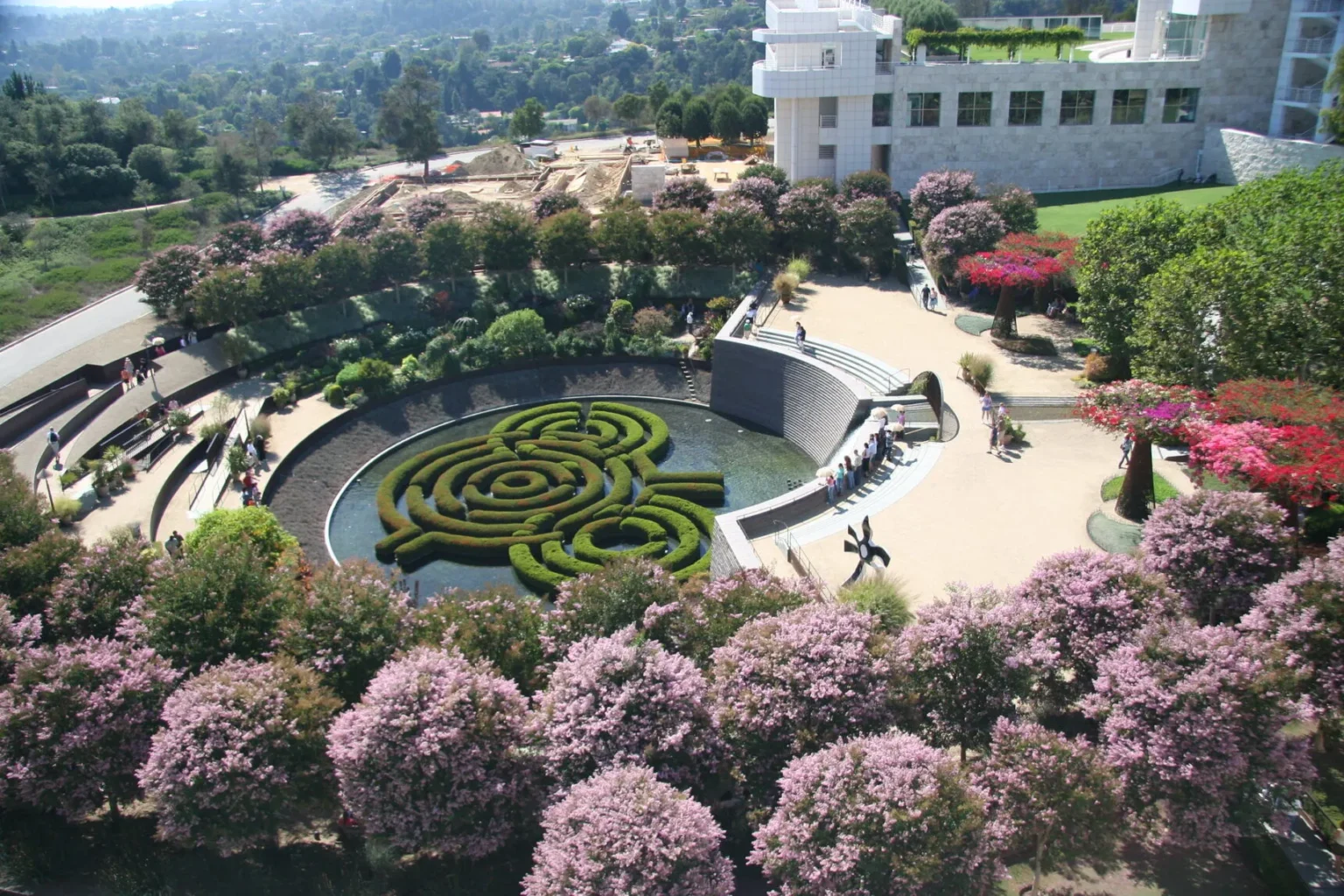
Perched above LA’s sprawl, the Getty Center elevates art to temple status. Richard Meier’s travertine buildings glow differently each hour—harsh white at noon, honey-gold at sunset. The tram ride up feels like ascending to another realm. World-class art inside, but architecture and gardens steal the show.
Robert Irwin’s Central Garden descends through color-shifting plantings to floating azalea maze. City views stretch from downtown to Pacific on clear days. Free admission but reserve timed entry online. Parking $25. Weekday afternoons avoid crowds. Golden hour transforms everything—stay for sunset over the city.
What Makes The Getty Special
Details for The Getty Center
Pinnacles National Park — Bear Gulch Cave Trail
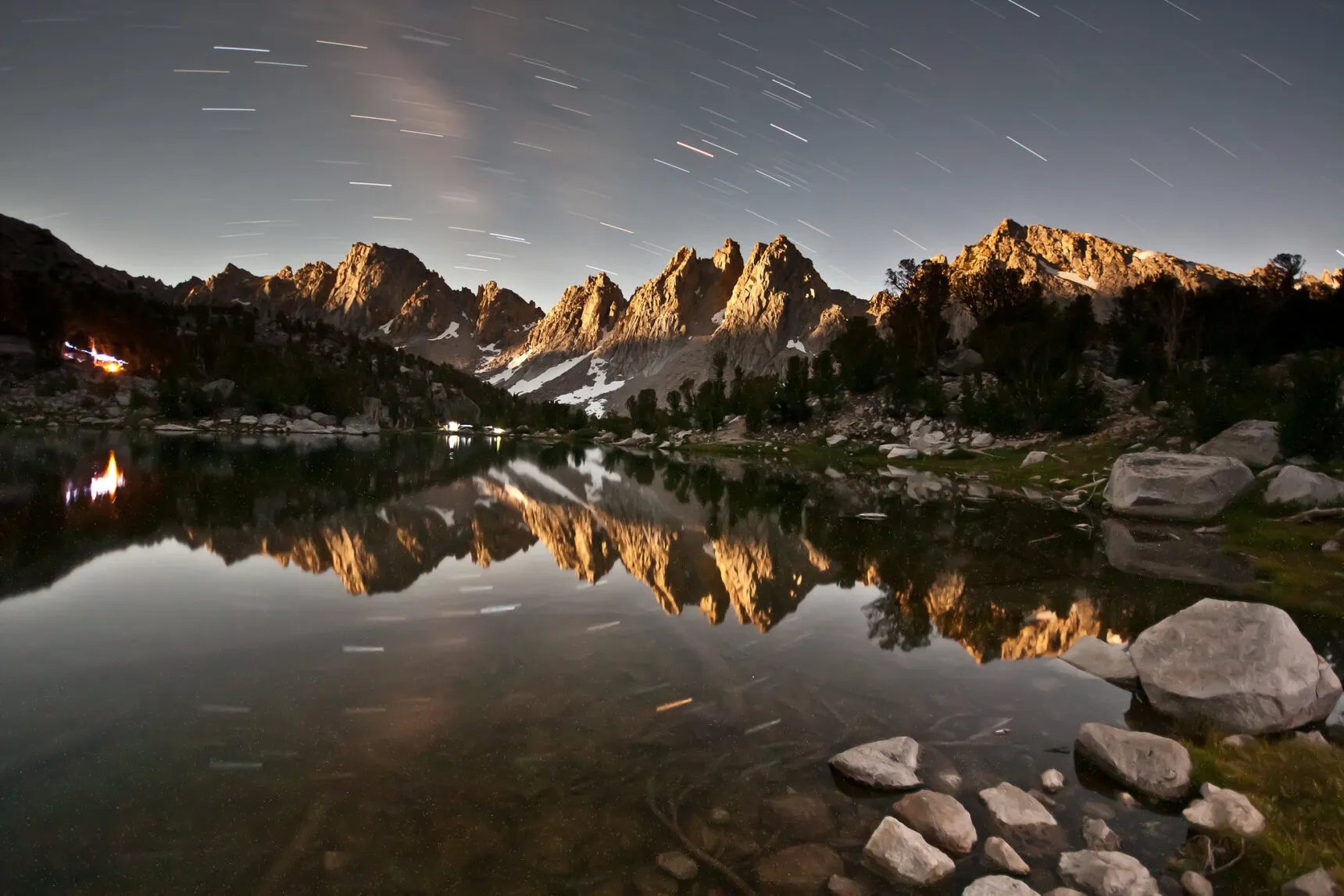
California’s youngest national park hides fascinating geology—an ancient volcano split by the San Andreas Fault. Half sits here; the other half 195 miles south. Bear Gulch Cave offers adventure without technical skills. Squeeze through boulder passages, climb stone stairs in darkness. Headlamp mandatory. Emerge by serene reservoir.
Cave closes May-July for bat pupping—check website first. California condors soar overhead; scan high spires with binoculars. Spring wildflowers paint hillsides spectacular. No road connects east and west entrances—choose your side. Parking fills by 10am weekends. Visit weekdays or arrive at sunrise for solitude.
What Makes Pinnacles Special
Details for Pinnacles
Bodie State Historic Park — California’s Best Ghost Town
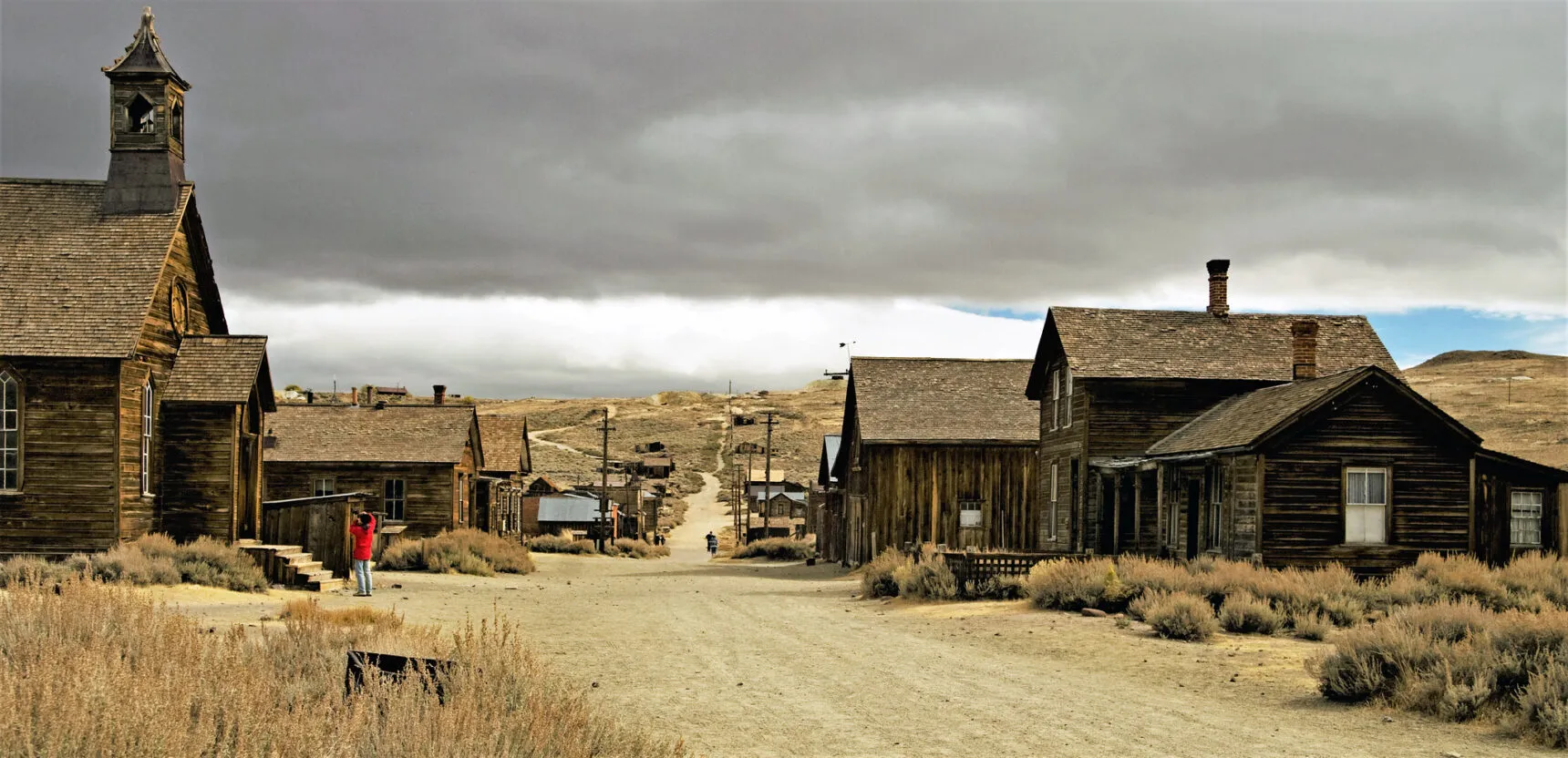
High in windswept hills, Bodie preserves the real Wild West. Once home to 10,000 fortune seekers, now 100 buildings stand in “arrested decay”—maintained but not restored. Peer through windows at dusty pool tables, stocked shelves, schoolhouse lessons frozen in time. The Methodist church anchors Main Street like a wooden sentinel.
Remote location and rough final miles deter casual tourists. Winter often closes access completely. Visit late spring through fall. The 8,379-foot elevation affects some visitors. No services—bring everything. Guided stamp mill tours reveal mining’s brutal reality. This authentic ghost town rewards those who make the journey.
What Makes Bodie Special
Details for Bodie
La Jolla Cove & Sea Caves — Urban Marine Sanctuary
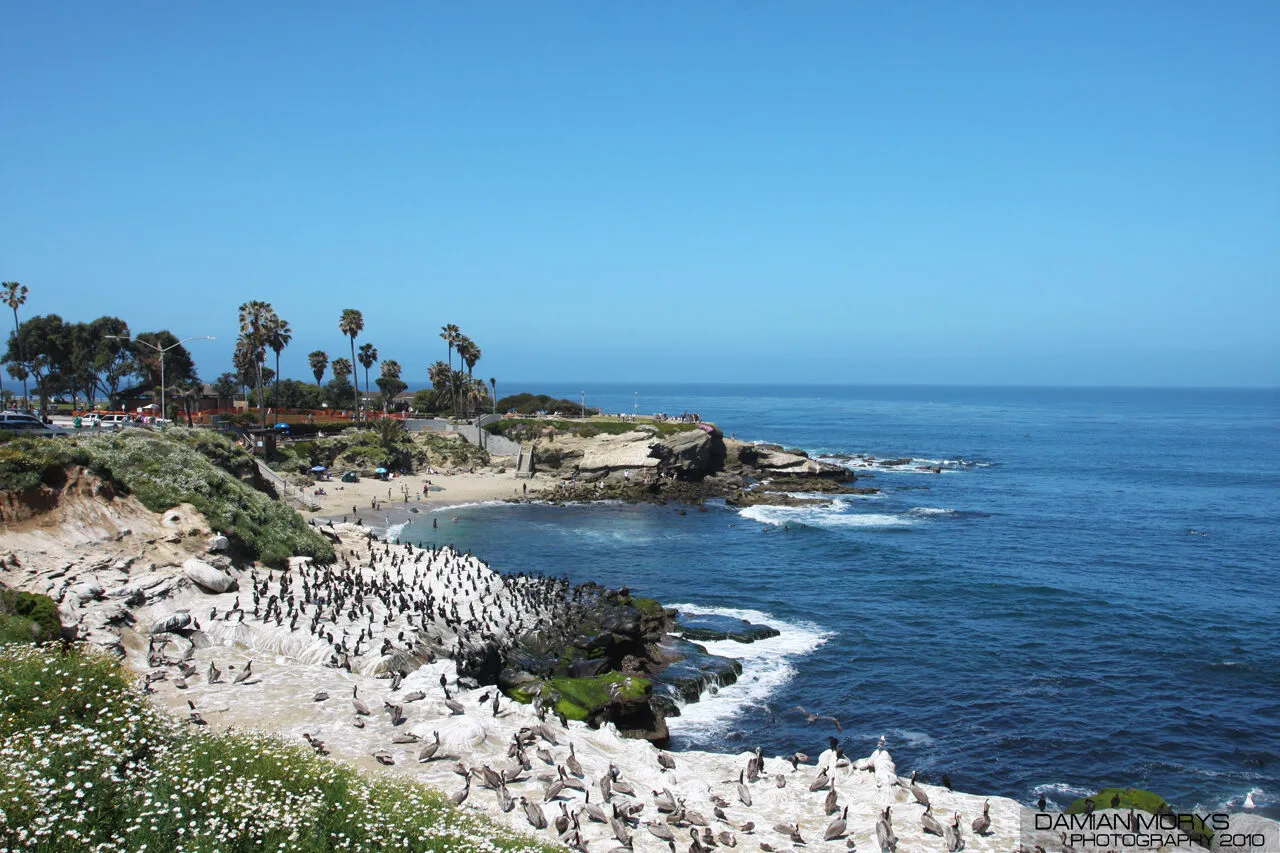
San Diego’s jewel merges wilderness with city life. Sea lions bark on protected rocks while snorkelers swim with bright orange Garibaldi fish in crystalline waters. The underwater park ecosystem thrives steps from boutique shops. Coastal walkway offers free wildlife viewing—respectful distance required. Marine sanctuary magic in an urban setting.
Seven sea caves punctuate sandstone cliffs. Kayak tours paddle into “Clam’s Cave” when conditions allow. Or descend through Cave Store’s tunnel to Sunny Jim Sea Cave ($5). Children’s Pool now hosts harbor seals December-May pupping season. Parking nightmare—arrive early or use paid garages. Best visibility mornings before winds.
What Makes La Jolla Cove Special
Details for La Jolla Cove
Glass Beach — Nature’s Transformation in Fort Bragg
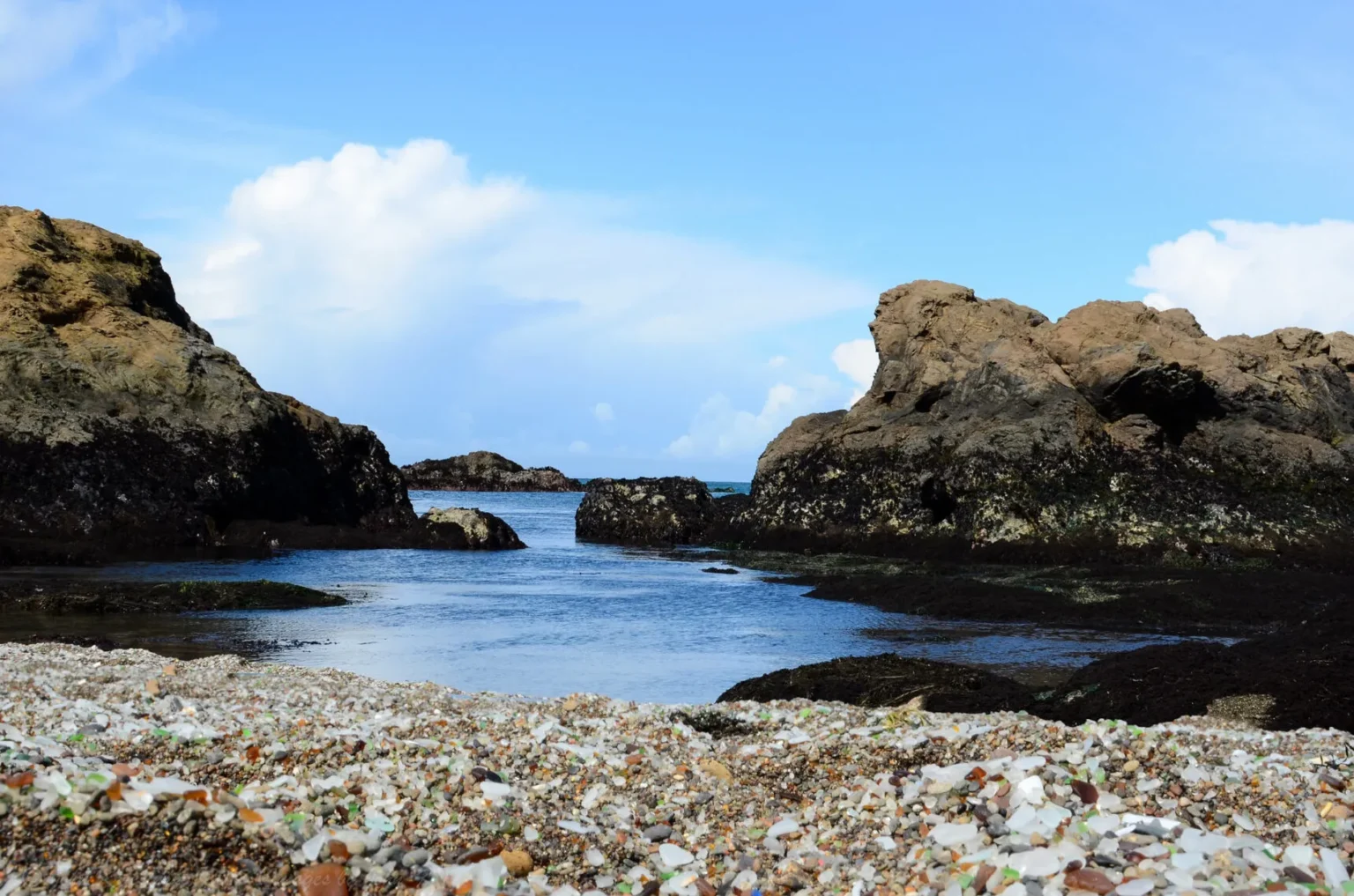
Fort Bragg’s Glass Beach tells a redemption story. Former town dump (1906-1967) transformed by Pacific waves into jeweled shore. Smooth glass pebbles—emerald, amber, rare cobalt—crunch underfoot instead of sand. Nature polished human carelessness into beauty. Most vibrant when wet from rain or receding tide. Take only photos.
Despite protection, visitors pocket souvenirs, slowly depleting this unique beach. Three former dump sites exist—main beach most accessible but picked over. Explore north trail for less-touched coves. Low tide reveals more treasures. The real souvenir? Understanding how nature reclaims and transforms our mistakes into art.
What Makes Glass Beach Special
Details for Glass Beach
Anza-Borrego Desert State Park — The Slot & Galleta Meadows Sculptures
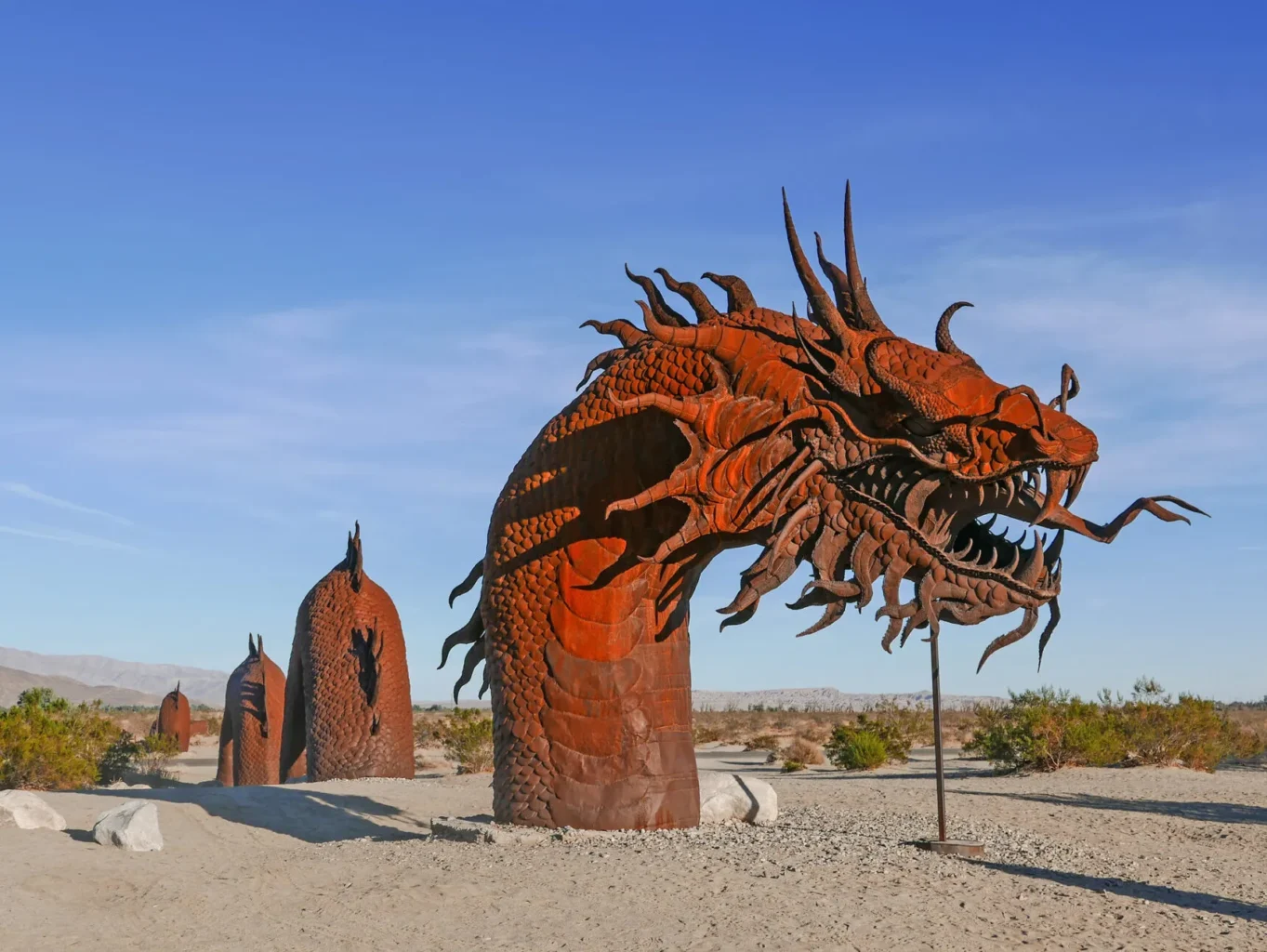
California’s largest state park juxtaposes nature’s art with human imagination. The Slot canyon squeezes adventurers through shoulder-width passages carved by flash floods. Look up—blue sky ribbons between textured walls create perfect photos. Short hike, big impact. Any car reaches the trailhead; adventure begins immediately.
Outside Borrego Springs, 130+ metal sculptures populate the desert. Ricardo Breceda’s fantastical creatures—dinosaurs, dragons, humans—rise from ocotillo and creosote. Free, always open, no fences. A scavenger hunt across the valley floor. Map from visitor center guides the search. Spring wildflowers add color to surreal scene.
What Makes Anza-Borrego Special
Details for Anza-Borrego
Frequently Asked Questions About California’s Most Beautiful Places
What’s the best time of year to visit these California destinations?
Each destination has its sweet spot. Death Valley and desert locations like Joshua Tree are best October-April when temperatures are bearable. Coastal spots like Big Sur and Point Reyes shine in fall with clear skies and smaller crowds.
Yosemite waterfalls peak in late spring, while wildflowers bloom March-May in places like Pinnacles and Anza-Borrego. Summer works for high-elevation spots like Bodie and Alabama Hills, though expect crowds at popular parks.
Which destinations require advance reservations or permits in 2025?
Yosemite requires vehicle reservations April-October booked months ahead on Recreation.gov. Fern Canyon needs permits May-September. Alabama Hills requires free camping permits. The Getty Center needs timed-entry tickets (free admission, but reserve online).
Most other destinations don’t require advance booking, but always check official websites as policies change. Popular parking lots like Pfeiffer Beach and Pinnacles fill early on weekends.
What are the most family-friendly destinations on this list?
The Getty Center offers easy access, educational programs, and fascinating architecture. La Jolla Cove provides free sea lion viewing from paved walkways. Glass Beach and the Cypress Tree Tunnel at Point Reyes require minimal walking.
Salvation Mountain and the Galleta Meadows sculptures offer quirky photo ops without hiking. Alabama Hills and Mono Lake’s South Tufa area have short, easy trails perfect for kids.
Which locations offer the best photography opportunities?
For sunrise shots, Zabriskie Point, Mono Lake, and Alabama Hills’ Mobius Arch are unbeatable. Sunset photographers should head to Taft Point, Pfeiffer Beach (winter only for keyhole effect), or the Cholla Cactus Garden.
Night sky enthusiasts will love Joshua Tree, Alabama Hills, and Death Valley—all designated Dark Sky areas. The Getty Center provides architectural photography, while Bodie offers moody historical shots.
How can I avoid crowds at these popular destinations?
Visit Tuesday-Thursday when possible. Arrive at sunrise—you’ll often have places to yourself. Yosemite’s Valley View is less crowded than Tunnel View. At Joshua Tree, explore beyond the main attractions.
For Big Sur, use lesser-known pullouts. Alamere Falls’ long hike naturally limits crowds. Bodie’s remote location keeps numbers down. Winter visits to normally crowded spots like Yosemite offer serenity in exchange for cold weather.
What essential items should I bring for visiting these places?
Water is critical—at least 1 gallon per person for desert locations. Headlamps for Taft Point sunset hikes and Pinnacles caves. Cash for Pfeiffer Beach ($15) and Bodie entrance. Binoculars enhance wildlife viewing at Point Reyes and Pinnacles (condors!).
Download offline maps before visiting areas without cell service (most of Big Sur, Death Valley, Bodie). Layers for temperature swings, especially in mountains and deserts.
Final Thoughts: Your California Adventure Awaits
California’s most beautiful places offer far more than scenic views—they provide transformative experiences that linger long after you’ve returned home. From the towering redwoods that humble us with their ancient presence to the surreal desert sculptures that spark imagination, each destination tells a unique story of natural wonder and human creativity.
The 2025 traveler faces new realities: reservation systems, climate-driven access changes, and the responsibility to preserve these treasures for future generations. Yet these challenges make the journey more rewarding. Planning ahead, respecting regulations, and practicing Leave No Trace principles ensure these magnificent places remain accessible and pristine.
Whether you’re drawn to Yosemite’s granite cathedrals, Death Valley’s alien landscapes, or Glass Beach’s redemption story, California offers adventures for every spirit. The key is starting somewhere—pick a destination that calls to you and begin planning. The Golden State’s wonders await, ready to create memories that define not just vacations, but life itself.
Save this guide for your next California adventure, and remember: the best time to explore is always now!
Ready to explore more? Discover our guides to California’s Best National Parks and Epic California Coastal Road Trips for more unforgettable adventures.


